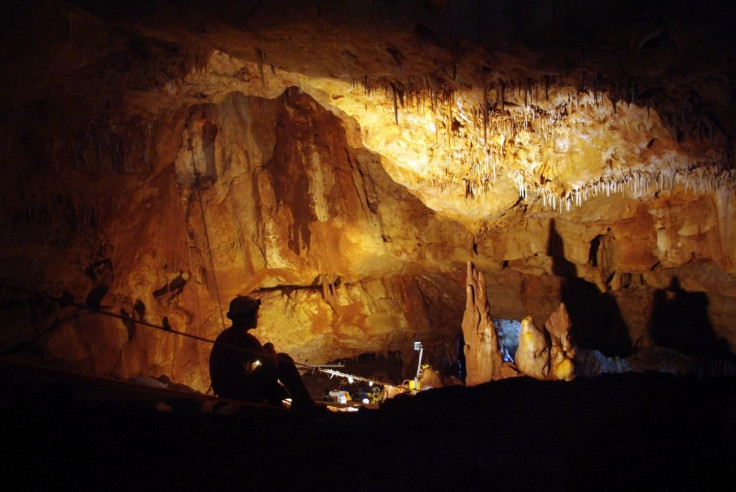55,000-Year-Old Skull Found In Israel Is ‘Missing Piece’ Of Humans’ First European Migration [PHOTO]

An ancient skull uncovered from a cave in northern Israel has confirmed what scientists suspected about modern man’s migration into Europe, namely that humans wandered out of Africa and began colonizing the continent sometime between 40,000 and 60,000 years ago. The partial skull, found buried in Manot Cave in western Galilee, dates back about 55,000 years and has shown for the first time that humans had reached the Levant by then, according to research published Wednesday in the journal Nature. It may also mark the site where Neanderthals, an extinct species of human whose remains have been found all over Eurasia, and Homo sapiens first interbred, researchers said.
The skull was actually discovered in 2008 but underwent years of analysis before conclusions about its age and origin were drawn. “It’s a key piece in the puzzle of human evolution,” study author Israel Hershkovitz, who was involved in the excavation, told the Times of Israel. “This is one of the most important missing pieces because it allows you to connect the African hominids with the European hominids.”
The shape of the cranium indicated a fully modern human, probably a woman, although the fossil’s gender could never be firmly determined because of its missing brow ridge, researchers noted. The human’s brain would have been about 25 percent smaller than brains today.
Oldest skull (55,000 years-old) in #MiddleEast found in Northern #Israel. http://t.co/hOuNyM7cvP pic.twitter.com/aIgZ0eX4a3
— The Jerusalem Post (@Jerusalem_Post) January 28, 2015Modern humans first left Africa some 60,000 years ago. Scientists have long thought that climate played a role in restricting Homo sapiens' movements until then, according to National Geographic. The onset of a particularly bleak ice age some 110,000 years ago would have discouraged Homo sapiens from venturing north. By some accounts, the harsh climatic shift caused the human population in Africa to drop to fewer than 10,000.
When conditions improved, around 70,000 years ago, the modern human population exploded and began migrating. Europe’s first early human colonizers likely crossed the Bab-al-Mandeb Strait into present-day Yemen from Djibouti, moving quickly into India, Southeast Asia and on to Australia.
It is widely believed that the Levant served as a main corridor for early humans migrating from Africa into Europe. The skull found in Manot provided paleontologists with the earliest evidence that Homo sapiens inhabited the region alongside Neanderthals. Researchers said the skull did not necessarily prove that ancient trysts took place between the two species, however.
Thanks to a cave entrance collapse more than 30,000 years ago, the skull at Manot remained sealed off from anyone who could have taken it before archaeologists could reach it. “The most exciting thing about this cave is that no one has stepped in it for 30,000 years,” Hershovitz, an anthropologist from Tel Aviv University, told the Jerusalem Post. Researchers described the cave as being like a time capsule.
© Copyright IBTimes 2024. All rights reserved.












